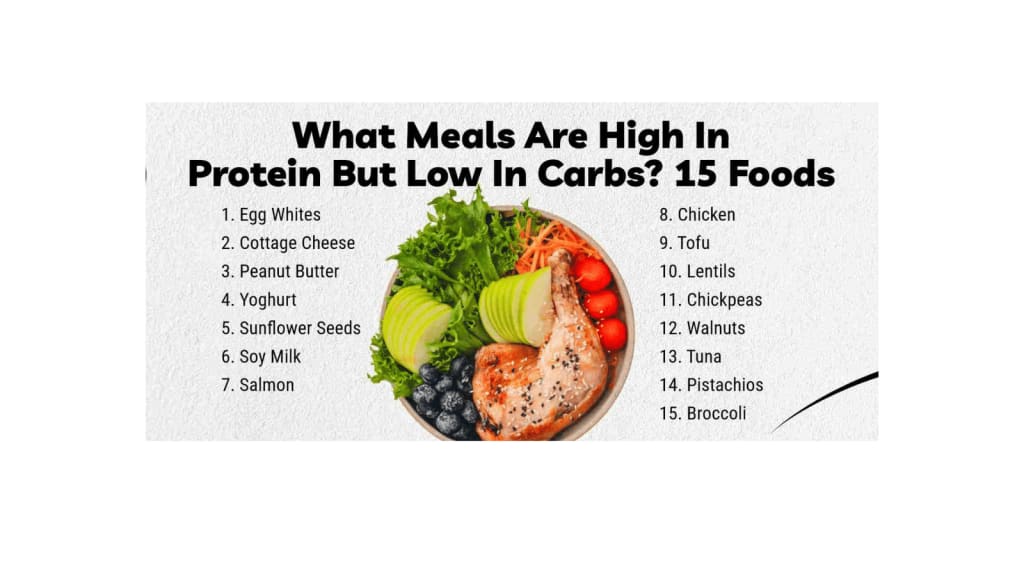The protein revolution is here, and Lab-Grown Protein: Sustainable & Low-Carb options are transforming how health-conscious consumers approach sugar detox and metabolic optimization. Pioneering companies like Perfect Day are creating animal-free whey protein through precision fermentation, delivering identical nutritional profiles to traditional dairy protein without lactose, added sugars, or the environmental impact of conventional animal agriculture.
Meanwhile, cultivated meat technologies are producing real chicken, beef, and seafood from animal cells without the processed additives, preservatives, and hidden sugars commonly found in conventional processed meats. This breakthrough ensures that Lab-Grown Protein: Sustainable & Low-Carb sources provide clean, pure nutrition that supports sugar detox goals without compromising on taste, texture, or nutritional completeness.
For individuals committed to sugar detox who want to avoid the hidden additives and processing aids found in many conventional protein sources, Lab-Grown Protein: Sustainable & Low-Carb represents the ultimate solution. These innovations deliver pure protein without the unwanted extras that can sabotage sugar detox efforts while supporting environmental sustainability and ethical food production.
What Are Lab-Grown Proteins and Why Do They Matter for Sugar Detox?

Traditional protein sources often contain hidden obstacles to successful sugar detox, from lactose in dairy proteins to processing additives and sugar-based preservatives in conventional meats. Lab-Grown Protein: Sustainable & Low-Carb technologies eliminate these challenges by creating pure protein through controlled cellular processes that require no unwanted additions.
Animal-free whey protein, produced by companies like Perfect Day, uses precision fermentation to program microorganisms like yeast to produce identical whey proteins found in cow’s milk. This process creates lactose-free, hormone-free whey protein with complete amino acid profiles and superior digestibility compared to traditional dairy sources. The fermentation process requires no added sugars, artificial sweeteners, or chemical processing aids.
Cultivated meat technology grows real animal cells in controlled environments using nutrient-rich growth media. Unlike conventional processed meats that often contain dextrose, corn syrup, and other sugar-based additives for flavor enhancement and preservation, cultivated meats are produced without these problematic ingredients. The result is pure protein that tastes, cooks, and provides nutrition identical to conventional meat.
The cellular agriculture process eliminates many contamination risks associated with traditional animal agriculture, including antibiotic residues, hormone treatments, and bacterial pathogens. This creates cleaner protein sources that support rather than hinder sugar detox efforts by removing potential inflammatory triggers and metabolic disruptors.
Both technologies represent circular approaches to protein production, using significantly fewer resources than conventional methods while producing superior nutritional outcomes for health-focused consumers seeking clean protein sources.
Health Benefits of Clean Lab-Grown Protein Sources

The advantages of Lab-Grown Protein: Sustainable & Low-Carb extend far beyond environmental benefits, offering substantial health optimization advantages that directly support sugar detox success and metabolic wellness goals.
Blood sugar stability benefits significantly from eliminating hidden sugars and additives commonly found in processed protein sources. Many conventional protein powders contain maltodextrin, dextrose, or artificial sweeteners that can trigger insulin responses or cravings. Lab-grown proteins provide pure amino acid nutrition without these metabolic disruptors.
Digestive optimization occurs through elimination of lactose, casein sensitivity triggers, and inflammatory compounds often present in conventional dairy proteins. Animal-free whey maintains the fast absorption and complete amino acid profile of traditional whey while removing digestive irritants that can impair nutrient absorption and contribute to systemic inflammation.
Protein utilization efficiency improves with lab-grown sources due to their purity and lack of competing compounds that can interfere with amino acid absorption. Clean protein sources allow for better muscle protein synthesis, satiety signaling, and metabolic support during sugar detox periods when dietary changes may stress the body.
Inflammatory reduction results from eliminating exposure to antibiotics, hormones, and environmental toxins commonly found in conventionally produced animal proteins. Chronic low-grade inflammation can impair insulin sensitivity and increase sugar cravings, making clean protein sources particularly valuable during detox phases.
Allergen elimination through precision production allows individuals with dairy sensitivities, meat allergies, or other protein-related reactions to access high-quality protein sources previously unavailable to them. This expands protein options for those with restricted diets during sugar detox.
The consistent nutritional profiles of lab-grown proteins provide reliable macro and micronutrient content, making meal planning and nutritional optimization more precise and predictable compared to variable conventional protein sources.
Challenges and Market Realities

While Lab-Grown Protein: Sustainable & Low-Carb offers remarkable advantages, understanding current limitations and practical considerations helps set realistic expectations for integration into sugar detox strategies.
Availability remains limited, with most lab-grown protein products available primarily through specialty retailers, direct-to-consumer channels, or specific geographic markets. Regulatory approval processes for cultivated meat vary by country and are still evolving, affecting product availability and market expansion timelines.
Cost considerations are significant, with lab-grown proteins typically commanding premium prices compared to conventional alternatives. Production scaling challenges and sophisticated technology requirements currently result in higher retail costs, though prices are expected to decrease as production volumes increase and technology improves.
Taste and texture expectations may require adjustment for some consumers, particularly with early-generation cultivated meat products. While companies are rapidly improving sensory characteristics, some products may have subtle differences from conventional counterparts that require culinary adaptation or preference adjustment.
Consumer acceptance varies, with some individuals embracing the technology while others prefer traditional protein sources. Education about production methods, safety profiles, and nutritional benefits helps address concerns about novel food technologies and cellular agriculture processes.
Regulatory landscapes continue evolving, with approval processes for new lab-grown protein products requiring extensive safety testing and documentation. This can delay product launches and limit ingredient innovation compared to conventional food product development timelines.
Supply chain development is still maturing, with limited production facilities and distribution networks compared to established conventional protein industries. This can affect product consistency, availability, and geographic access for consumers interested in these innovative protein sources.
Tips and Trends in Cellular Agriculture Innovation

The world of Lab-Grown Protein: Sustainable & Low-Carb continues evolving rapidly, with breakthrough technologies, improved production methods, and expanded product applications emerging regularly in the cellular agriculture space.
Precision fermentation advances are enabling production of increasingly complex proteins beyond basic whey, including casein, collagen, and specialty bioactive compounds. Companies are developing animal-free versions of lactoferrin, immunoglobulins, and other functional proteins that provide specific health benefits previously available only from animal sources.
Cost reduction strategies focus on optimizing growth media, improving fermentation efficiency, and scaling production facilities. Industry analysts predict price parity with conventional proteins within the next 5-10 years as technology matures and production scales increase significantly.
Hybrid product development combines lab-grown proteins with plant-based ingredients to create products with enhanced nutritional profiles, improved taste, and better functionality. These blended approaches often provide superior nutrition compared to either technology alone while reducing costs and improving market acceptance.
Regulatory streamlining is accelerating globally, with agencies developing clearer pathways for approving novel proteins and cellular agriculture products. The European Union, United States, and Singapore are leading regulatory framework development that other countries are adopting.
Restaurant and foodservice integration is beginning, with progressive chefs incorporating lab-grown proteins into menu items as both novelty attractions and sustainable protein sources. This mainstream exposure helps normalize these technologies and educates consumers about their benefits and applications.
Investment in biotechnology continues growing, with major food companies, venture capital firms, and governments funding research into cellular agriculture. This financial support accelerates innovation and brings new products to market faster than would otherwise be possible.
Partnership development between cellular agriculture companies and established food manufacturers creates distribution channels and market access that individual startups couldn’t achieve independently. These collaborations are essential for mainstream market penetration and sustainable food system transformation.
Frequently Asked Questions

How does the nutritional profile of lab-grown whey protein compare to traditional dairy whey?
Lab-grown whey protein is molecularly identical to traditional dairy whey, providing the same complete amino acid profile, bioavailability, and protein synthesis benefits. The key advantages are the elimination of lactose, hormones, antibiotics, and potential contaminants found in conventional dairy sources. Lab-grown versions often have more consistent nutritional profiles since production conditions are controlled, unlike conventional dairy which can vary based on animal diet, health, and environmental factors.
Are there any safety concerns with consuming lab-grown proteins compared to conventional sources?
Lab-grown proteins undergo extensive safety testing and regulatory review before approval, often exceeding the safety standards of conventional protein sources. The controlled production environment eliminates risks of bacterial contamination, antibiotic residues, and hormone exposure common in conventional animal agriculture. However, as with any new food technology, long-term consumption studies are still limited, though initial research suggests equal or superior safety profiles compared to traditional sources.
How do lab-grown proteins taste compared to their conventional counterparts?
Modern lab-grown proteins are virtually indistinguishable from conventional versions in taste and functionality. Animal-free whey protein dissolves, mixes, and tastes essentially identical to traditional whey, while cultivated meats increasingly replicate the taste, texture, and cooking properties of conventional meats. Early products had some sensory differences, but rapid technological improvements have largely addressed these concerns, with blind taste tests often showing no detectable differences.
What’s the environmental impact difference between lab-grown and conventional proteins?
Lab-grown proteins typically require 95% less land, 80% less water, and produce 85% fewer greenhouse gas emissions compared to conventional animal agriculture. The controlled production environment eliminates agricultural runoff, reduces antibiotic use, and requires no pesticides or fertilizers. While energy requirements for fermentation and cell cultivation are significant, the overall environmental footprint is dramatically lower than traditional protein production methods.
Can people with specific dietary restrictions safely consume lab-grown proteins?
Lab-grown proteins often address common dietary restrictions better than conventional sources. Animal-free whey is lactose-free, hormone-free, and typically suitable for vegetarians who consume dairy. Cultivated meat can be produced without antibiotics, hormones, or feed additives that cause sensitivities. However, individuals with severe allergies should consult healthcare providers, as lab-grown proteins maintain the same basic molecular structure as their conventional counterparts and may trigger similar allergic responses.
Conclusion: The Protein Revolution Supporting Clean Nutrition

Lab-Grown Protein: Sustainable & Low-Carb represents a fundamental shift toward cleaner, more sustainable nutrition that perfectly aligns with sugar detox goals and metabolic health optimization. These innovative protein sources eliminate the hidden additives, processing chemicals, and sugar-based preservatives that can sabotage detox efforts while providing superior nutritional profiles and environmental benefits.
The investment in lab-grown proteins pays dividends through cleaner nutrition, reduced environmental impact, and freedom from the inflammatory compounds and metabolic disruptors found in many conventional protein sources. By choosing these cutting-edge alternatives, you’re supporting both personal health goals and sustainable food system transformation.
As cellular agriculture technologies continue advancing and costs decrease, lab-grown proteins will become increasingly accessible and mainstream. Early adopters who embrace these innovations now are positioning themselves at the forefront of a nutrition revolution that prioritizes purity, sustainability, and optimal metabolic support.
Ready to experience the future of clean protein? Explore animal-free whey proteins from companies like Perfect Day, stay informed about cultivated meat availability in your area, and consider how these revolutionary protein sources might enhance your sugar detox journey. Visit sugardetoxlab.com for more innovative approaches to clean nutrition, subscribe to stay updated on cellular agriculture developments, and share your experiences with lab-grown proteins in the comments below to help others discover these remarkable nutritional innovations.







